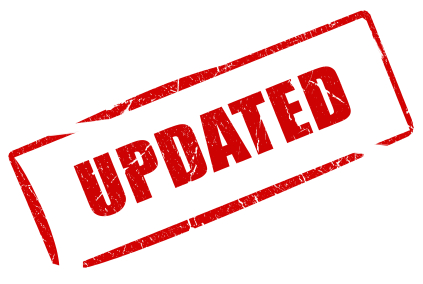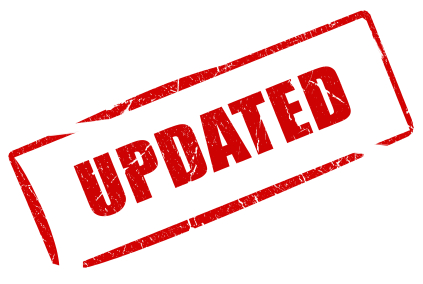4 Ways the AHA's New Billing Guidelines Benefit Statement Processing
September 4, 2012 •Brian Watson

 The American Hospital Association (AHA) has been a leading, positive force for change in the healthcare industry since the early 1900s.
The American Hospital Association (AHA) has been a leading, positive force for change in the healthcare industry since the early 1900s.
And over the past decade, it’s been equally instrumental (along with groups like the HFMA) in spearheading the patient friendly billing revolution: co-sponsoring the landmark Patient Friendly Billing Project in 2001 and introducing a series of guidelines and principals on billing and collections in 2003 that were voluntary implemented by its hospital members.
Earlier this summer, the AHA revisited those billing and collections guidelines for the first time. Largely a reflection of healthcare changes surrounding the Patient Protection and Affordable Care Act (or ACA), the new practices are designed to emphasize the shared role that care providers, patients, and health partners play in ensuring that billing is timely and transparent.
The full guidelines are an important read, and can be found online here. But this is primarily a statement processing blog. So what are the key takeaways from a patient statement and payment perspective?
Well here are four smart ways to use the AHA billing guidelines to make your statements even more informative, responsive, and patient friendly.
1). Guideline: “Hospitals should provide financial counseling to patients about their hospital bills and should make the availability of such counseling widely known.”
This falls squarely under the category of being as up-front and transparent about patient billing as possible. Patients shouldn’t be forced to perform a thorough audit of your website to find out about the financial services your offer. Or track down a charity care or financial assistance form. Or discover contact information for your financial counseling.
Instead, incorporate all that into your statement processing approach, with clear instructions and financial service contact information and special letters delivered to patients that are uninsured, use Medicaid, or otherwise qualify for financial counseling or services.
Another good idea? Include a Frequently Asked Questions Insert along with your statements that explains key billing information in depth. Providing simple, understandable, plan-language answers to customer service, payment channel, financial service, and itemized billing questions is a great way to affordably head-off billing issues before they become customer service calls.
Finally, highlight all that information again with prominent placement on your website and EBPP patient billing and payment application.
2). Guideline: “Hospitals should use a billing process that is clear, concise, correct and patient friendly.”
An oldie-but-a-goodie, this guideline describes patient friendly billing in a nutshell. Leverage its wisdom to ensure your statement design communicates key billing information (what’s owed, for what, and by when) in a way that’s simple and jargon-free.
That means using call-out boxes and prominent placement to appropriately emphasize key billing information. Color and shading, text elements, headlines, and plenty of white space to deliver a clean statement that separates billing sections into bite-size, easily understandable chunks of information. And efficient, plain language messaging that only adds information if it’s plainly written, easy to understand, and increases statement clarity.
3). Guideline: “Hospitals should make available for review by the public specific information in a meaningful format about what they charge for items and services.”
This principle is both an important resource for patients and tailor-made for best class EBPP applications. Treatment cost estimators are a common tool offered by many online payment applications that provide a personalized, comprehensive, side-by-side look at the costs of specific services.
And that enables patients to determine what a service should cost, how much their insurance should cover, and how much they will be asked to contribute. It also helps optimize your patient service staff, because representatives won’t be spending as much time answering questions about the costs of treatment.
It’s a win for both you and your patients. And by hosting it in an EBPP application, you’re helping to tie patients’ estimates back to their current financial profile, enabling them to make informed, data-backed financial decisions about future treatment.
4). Guideline: “Hospitals should communicate information to patients in a way that is easy to understand, culturally appropriate, and in the most prevalent languages used in their communities.”
According to the most recent census estimates, nearly 1 in 5 Americans over the age of 5 (or almost 47 million people) regularly speak a language other than English at home. That figure represents an increase of almost 15 million people since the 1990 census.
That only underscores that importance of translating patient statements and letters into the most used languages of patients in your community. With your internal patient demographic data as a starting point, best-class statement processing solutions use variable print tools to enable down-to-the-individual statement personalization of all copy, messaging, and statement elements.
The result is a culturally appropriate, language-specific statement that truly speaks to patients.
The AHA’s guidelines are a great starting point on the path to respectful, dignified, patient friendly billing and collections. But if you’d like to learn more about the kind of smart design strategies proven to deliver statements that both you and your patients will love, we invite you to download our free whitepaper, Building a Better Bill: Why Good Statement Design Matters (And How You Can Get It).
What other ways are you implementing the AHA’s new patient billing and collection guidelines?
Get Updates
Featured Articles
Categories
- Charity Care Management (1)
- Compliance (2)
- Customer Service (8)
- Digital Front Door (1)
- Direct Mail (6)
- eBilling (1)
- EBPP (34)
- ESL Statement (2)
- eStatement (1)
- Healthcare Channel Partner Billing (1)
- IVR (3)
- Mobile Payment (11)
- Online Billing and Payment (6)
- Online Patient Payment (17)
- Outsource Print Management (4)
- Paperless Billing (4)
- Patient Engagement (2)
- Patient Friendly Billing (21)
- Print and Mail (7)
- QR Codes (1)
- Quick Pay (7)
- Security (1)
- Self-Pay Patients (9)
- Self-Pay Revenue (4)
- Statement Design (32)
- Statement Print and Mail (1)
- Statement Printing and Mailing (28)
- Statement Processing (36)
- TransPromo (1)
- Up-Front Billing (1)

